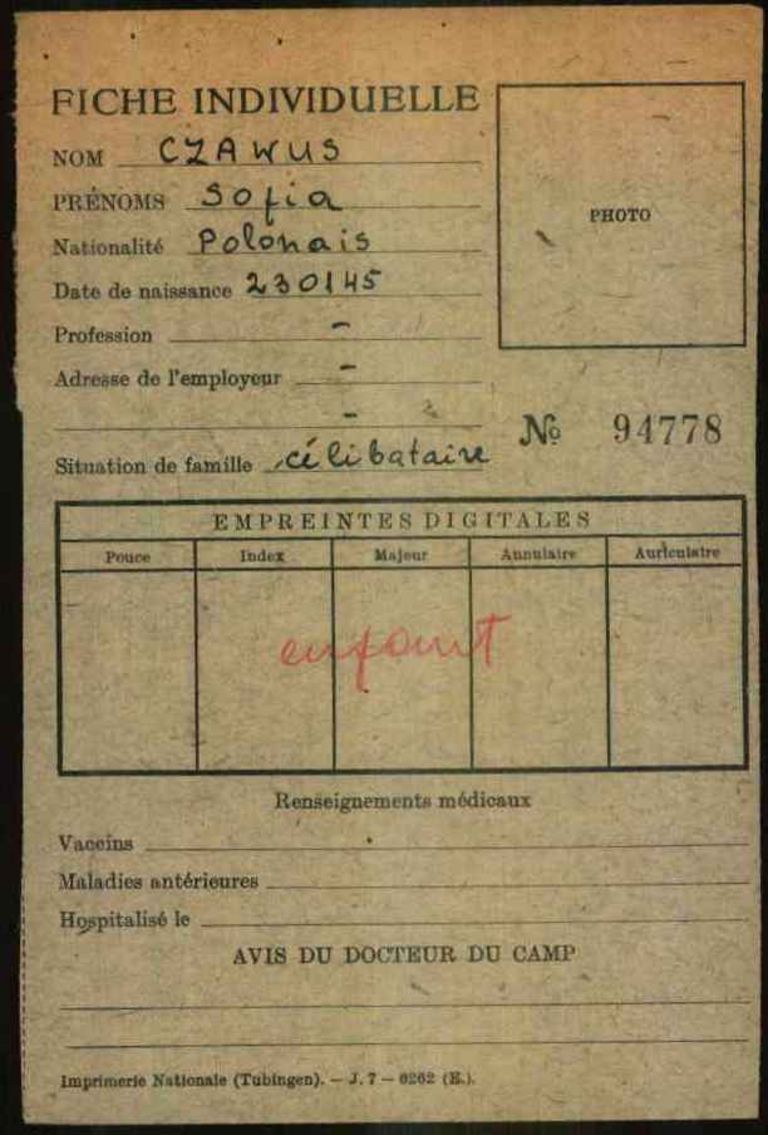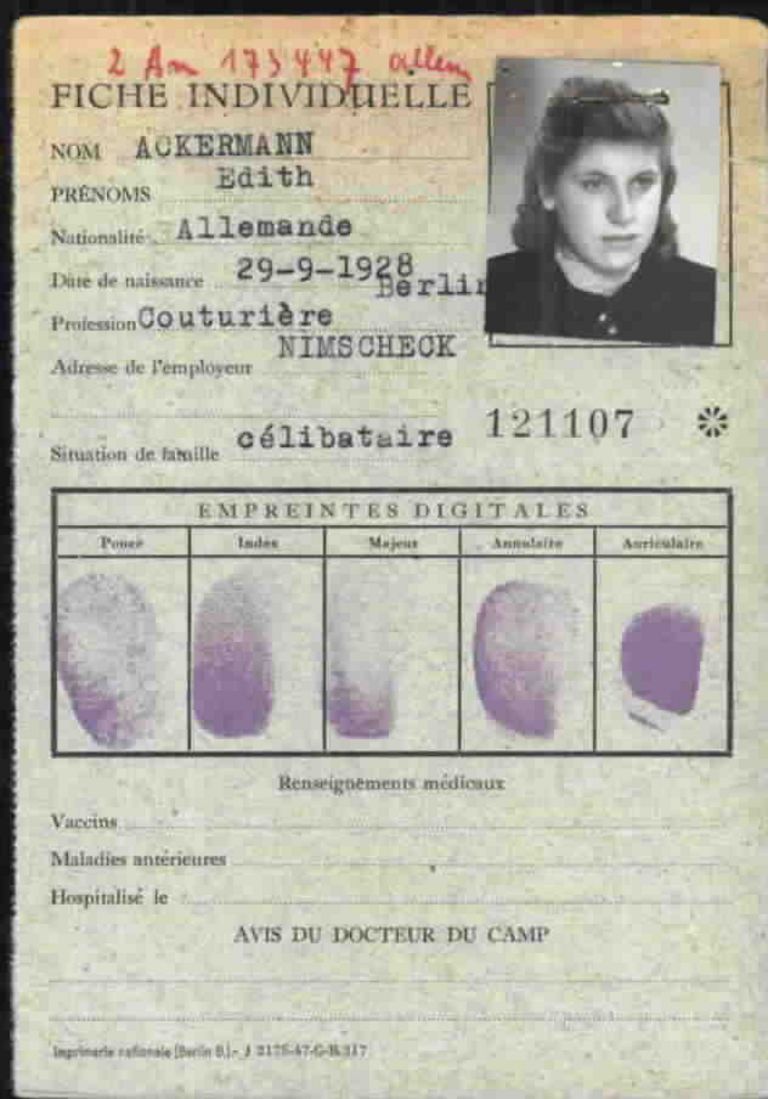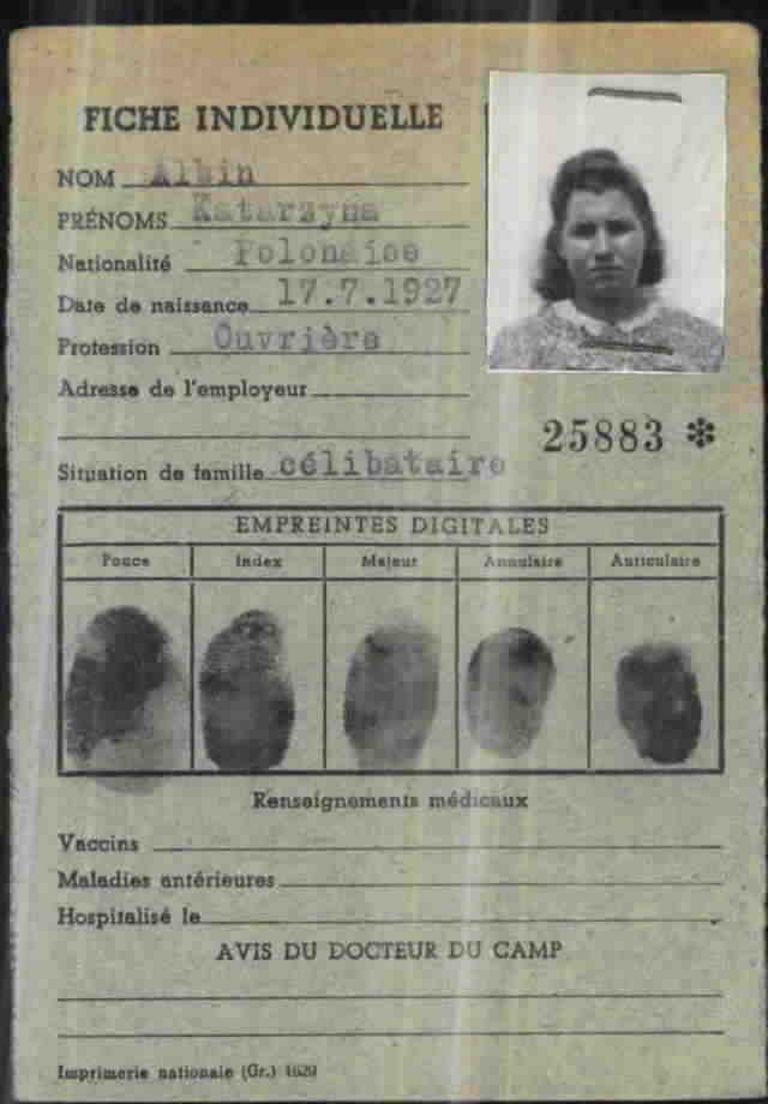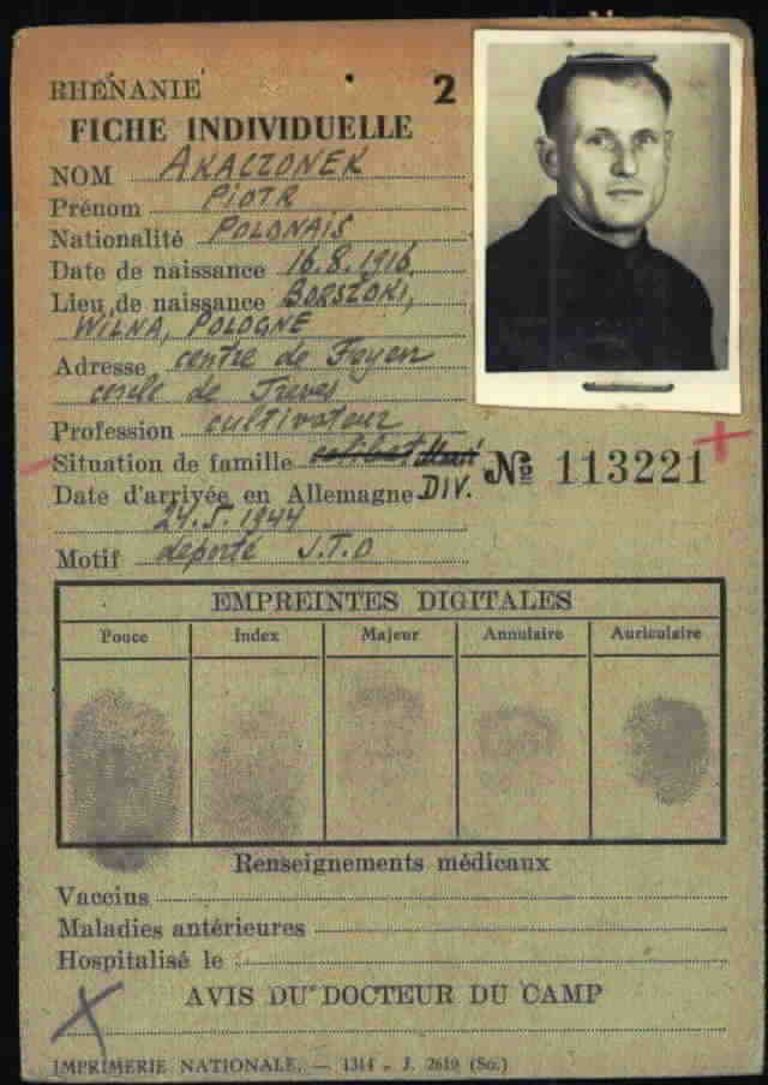Page of
Page/
- Reference
- Intro
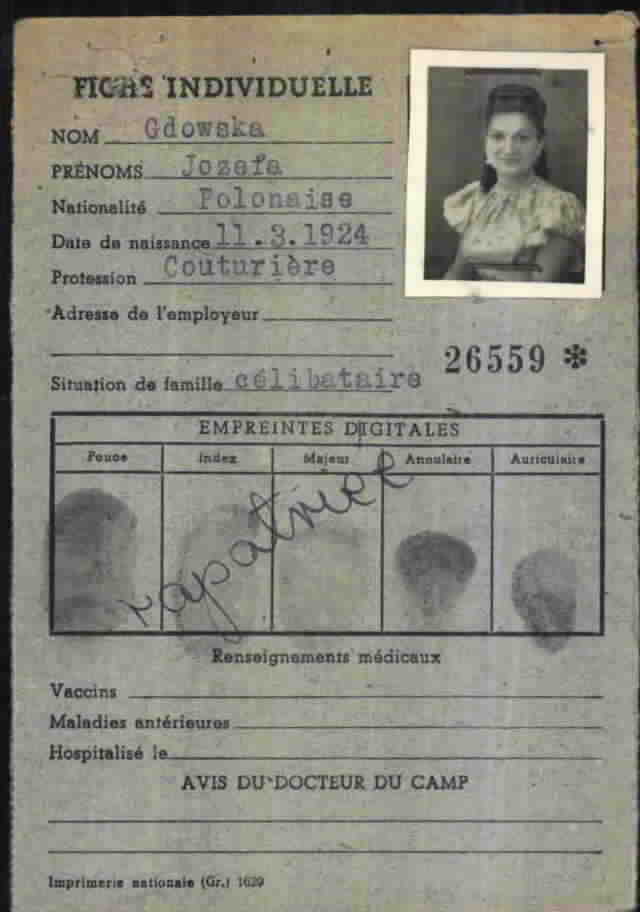

The Arolsen Archives contain a very large number of fiches individuelles, but unfortunately, very little is today known about their origins or use. The only thing we know for sure is that they were created after the end of the war in the French occupation zone and that there were up to three copies for each person. Not only were they used for the general registration of DPs, they were also used to record their further movements.
The Arolsen Archives contain a very large number of fiches individuelles, but unfortunately, very little is today known about their origins or use. The only thing we know for sure is that they were created after the end of the war in the French occupation zone and that there were up to three copies for each person. Not only were they used for the general registration of DPs, they were also used to record their further movements.
Questions and answers
-
Where was the document used and who created it?
In the French occupation zone, three fiches individuelles were created for each DP. Unfortunately, it is not possible to say exactly who created the cards or who updated them later. It may have been staff from aid organizations such as UNRRA or later the IRO; but it could also have been representatives of the French military government. Several organizations were involved in caring for the DPs in the French zone. Some DP camps were run by UNRRA, while others were run by the military, for example. However, the official nature of the documents can be seen from the fact that they were printed at the French national printing office in Paris.
The three copies of a fiche individuelle were used by various offices over the course of time. This is indicated by the different pieces of information recorded on the cards of a specific individual. The information given about the DPs on the backs of the cards in particular differs widely. However, research still needs to be carried out into exactly which offices processed the cards.
- When was the document used?
Unfortunately, the fiches individuelles were not dated when they were issued, and there are no sources that can provide clarity here. This means that conclusions as to the period of use can only be drawn from the data noted on the cards, such as the date of emigration on the back. Most of the dates given here are from the years between 1947 and the early 1950s.
- What was the document used for?
The structure of the fiches individuelles and the information they contain suggest that the cards were used both for the registration of the DPs and for administration in the DP camps. But several offices must have been involved, each of which received a copy of the card. This can be seen from the fact that the number of the CM/1 application and the amount of support provided (DP status) are noted on some cards, for example. It is, therefore, perfectly possible that the cards were also used for other purposes. Unfortunately, no instructions from the authorities responsible have yet been found as to exactly how the fiche individuelle was used.
- How common is the document?
There are a large number of fiches individuelles in the Arolsen Archives. It is interesting that for some DPs there is only one, while for others, two or even all three still exist.However, it is not possible to say how many fiches individuelles have been preserved in the Arolsen Archives. This is because ITS employees sorted the cards following an alphabetical-phonetic system and filed them together with other documents in the postwar card file (Nachkriegszeitkartei, Collection 3.1.1.1). This made it easier to search for references to individual people, but it also means there is now no way of knowing how many fiches individuelles have been preserved. However, it will probably be at least a high five-figure number. But in the near future, modern computer technology will find the answer: clustering techniques will make it possible to automatically identify and count these cards and other types of documents.
- What should be considered when working with the document?
DPs were not registered with a DP 2 card in the French zone. This has led to the theory that the fiches individuelles are the counterpart of the DP 2 card in the French zone. It is not yet possible for researchers to say whether this is true and whether the card had the same function. At present, the main argument against this theory is the fact that the dates found on the fiches individuelles are mostly from the late 1940s, while the DP 2 cards were already in use at the end of 1944.
The Arolsen Archives also hold other cards that were specially created for non-Germans in the part of the Rhineland occupied by France, but look very similar to the fiches individuelles. These cards can be identified by the fact that they are marked with the word Etranger (foreigner) and by the information they contain about the person’s appearance. Up until now, there is no indication of the existence of a variation of this card for the rest of the French occupation zone; all the cards are marked Rhénanie (Rhineland). These cards do not contain any references to the status as a DP, but they were also created for people who were not German citizens. There must have been a distinction between these cards and the fiches individuelles as both cards have never been found to exist together; there is always only one or the other. But it remains unclear how the cards relate to each other.
If you have any additional information about the fiches individuelles, we would appreciate it very much if you could send your feedback to eguide@arolsen-archives.org. New findings can always be incorporated into the e-Guide and shared with everyone.
Variations
Help for documents
About the scan of this document <br> Markings on scan <br> Questions and answers about the document <br> More sample cards <br> Variants of the document
